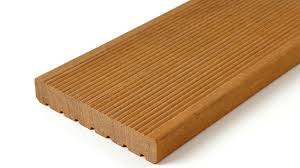Creating a unique deck design can transform your outdoor space into an impressive area that reflects your personal style. A great way to get a distinctive look is by mixing and matching decking materials (terasova prkna). Here’s everything you need to learn to help make your deck stand out.
1. Understand Your Options
decking boards (terasová prkna) come in various materials, including wood, composite, and PVC. Each has distinct colours and textures as well as finishes. Wood offers a classic look however, it is more prone to maintenance while composite and PVC boards are more robust and low-maintenance. Begin by choosing the options that you like and are within your budget.
2. Choose a Color Scheme
Mixing and matching decking boards can create a dynamic visual effect. Start by selecting a primary color for the majority the deck. This color will set the tone. Choose the opposite or complementary color for accent boards. For instance, a rich mahogany color as the primary one can be paired with lighter natural wood tones or grey in order to create contrast.
3. Consider Patterns and Layouts
The arrangement of different boards can significantly impact the overall design. The most popular patterns are mixing colours in a stripe pattern making a checkerboard look, as well as using inlays and borders to emphasize specific areas. Lay out your boards in different designs on a smaller scale prior to committing to the whole deck to understand the way they interact.
4. Think About Texture and Finish
Texture and finishes play an essential role in the appearance and feel of your deck. Combining smooth and textured boards will add interest and depth. For instance, a smooth finish could be contrasted with a brushed or distressed surface to produce a more lively surface.
5. Account for Maintenance
Different finishes and materials will require varying levels of care. Composite and PVC boards typically require less maintenance than wood, which might require staining or sealing. If you’re mixing different materials, ensure you’re prepared for the requirements of maintenance required by the various types.
6. Test Samples
Before making a final decision, it’s wise to obtain samples of the decking boards you’re considering. Place them in your yard to see how they appear in daylight and how they complement your landscaping and home.
7. Seek Professional Advice
If you’re uncertain about mixing patterns or materials consulting an expert in decking is a good idea. They can provide insights on the way different decks work together, and also help you avoid common design errors.
Mixing and matching decking boards can be a great way to personalize your outdoor space. By carefully selecting colors, patterns, and materials, as well as considering the maintenance requirements, you can build a unique and beautiful deck that will enhance the exterior of your home and creates an inviting space for relaxation and entertainment.

No Responses